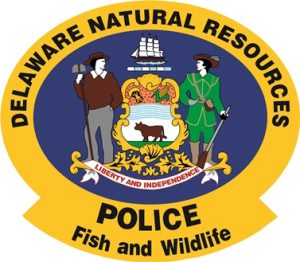Reminder for the week: Prepare for the season by signing up for a boating safety course
 DOVER – To achieve public compliance through education and enforcement actions that help conserve Delaware’s fish and wildlife resources and ensure safe boating and public safety, DNREC Division of Fish & Wildlife Natural Resources Police officers between April 4-10 made 680 contacts with anglers, boaters, hunters and the general public, including three vessel boardings for boating safety and fishing regulation compliance checks. Officers responded to 22 complaints and issued 10 citations. This week, with an expanded Fish & Wildlife Natural Resources Police presence continuing to be deployed as a deterrent, no citations were issued at the C&D Canal Conservation Area and associated recreational trail.
DOVER – To achieve public compliance through education and enforcement actions that help conserve Delaware’s fish and wildlife resources and ensure safe boating and public safety, DNREC Division of Fish & Wildlife Natural Resources Police officers between April 4-10 made 680 contacts with anglers, boaters, hunters and the general public, including three vessel boardings for boating safety and fishing regulation compliance checks. Officers responded to 22 complaints and issued 10 citations. This week, with an expanded Fish & Wildlife Natural Resources Police presence continuing to be deployed as a deterrent, no citations were issued at the C&D Canal Conservation Area and associated recreational trail.
Incidents of note:
- On April 10, Fish & Wildlife Natural Resources Police cited Clyde W. Jenkins, 63, of Bishopville, Md., for one count of possession of river herring during a closed season from Broad Creek at the Records Pond dam in Laurel. Jenkins was issued a $107 fine, including court costs.
- On April 10, Fish & Wildlife Natural Resources Police cited Michael A. Mccrea, 49, of Greenwood, for one count of possession of river herring during a closed season at Craigs Pond near Seaford. Mccrea was issued a $107 fine, including court costs.
- On April 9, Fish & Wildlife Natural Resources Police cited Michael A. Middleton, 18, of Delmar, for one count of possession of river herring during a closed season at Portsville Pond near Laurel. Middleton was issued a $107 fine, including court costs.
Citations issued by category, with the number of charges in parentheses, included:
Wildlife Conservation: Trespassing to hunt (2).
Fisheries Conservation: Unlicensed fishing (4), possession of river herring during a closed season (3), and possession of hickory shad during season closure (1).
Are you AWARE?
With spring finally in the air – and as part of the National Association of State Boating Law Administrators’ (NASBLA) “Spring Aboard” campaign for boating education – DNREC’s Division of Fish & Wildlife Natural Resources Police remind boaters to prepare for boating season by enrolling in a boating safety course through Delaware’s Office of Boating Safety and Education.
Courses cover the rules and regulations of Delaware’s waterways, including: appropriate speed limits; responsible boating skills and awareness; how to distinguish navigational aids and water depths; weather tips; information about basic engine mechanics; required and/or recommended safety equipment; what to do if a Fish & Wildlife Natural Resources Police officer stops your vessel, and the dangers of boating under the influence.
Delaware’s 8-hour basic boating safety course, which fulfills Delaware’s mandatory boating safety requirement, is offered in multiple locations statewide in one to four sessions. Upon completing the course, boaters receive a boating safety certificate, which they must carry with them while boating as proof of course completion.
Several providers also offer a Delaware-approved online version of the boating safety course. As an added incentive during NASBLA’s “Spring Aboard” campaign, BOATERExam.com will offer a 50-percent discount to students who complete their online boating safety course between April 17 and 23. For more information, visit www.boaterexam.com/usa/.
Delaware’s Office of Boating Safety and Education also provides volunteer instructors to private and non-profit organizations, schools, clubs and the general public to educate boaters on skills and seamanship and to encourage them to be safe, knowledgeable and responsible.
For more information, including Delaware’s boating safety course schedule, access to the online Delaware Boating Handbook and other boating information, please click Delaware Boating Safety, or contact Sgt. John McDerby, Fish & Wildlife Natural Resources Police boating safety coordinator, at 302-739-9913 or email john.mcderby@delaware.gov.
DNREC’s Division of Fish & Wildlife recognizes and thanks the majority of anglers, hunters and boaters who comply with and support Delaware’s fishing, hunting and boating laws and regulations. Citizens are encouraged to report fish, wildlife and boating violations to the Delaware Fish & Wildlife Natural Resources Police by calling 302-739-4580. Wildlife violations may also be reported anonymously to Operation Game Theft by calling 800-292-3030 or online at de.gov/ogt.
Media Contacts: Sgt. John McDerby, DNREC Division of Fish & Wildlife Natural Resources Police, 302-739-9913 or 302-354-1386, or Joanna Wilson, DNREC Public Affairs, 302-739-9902
Vol. 46, No. 129
